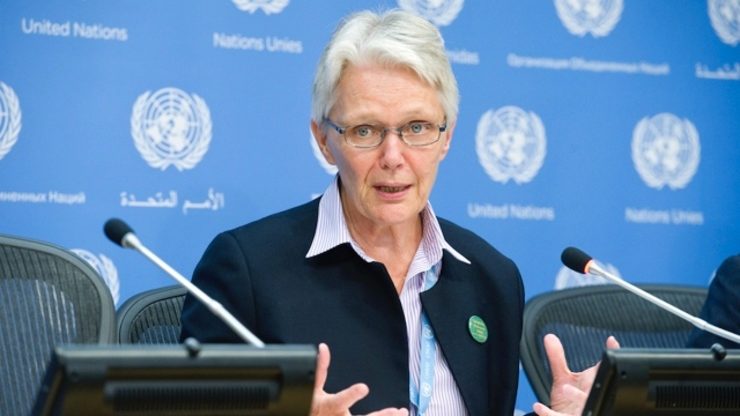SUMMARY
This is AI generated summarization, which may have errors. For context, always refer to the full article.

BANGKOK, Thailand – It takes 18 months after a catastrophe for people to forget.
This is according to Margareta Wahlström, first Special Representative of the UN Secretary-General for Disaster Risk Reduction, at a press briefing during the 6th Ministerial Conference for Disaster Risk Reduction in this city. More than 3,000 volunteers, including 22 government ministers, were present to discuss the issue.
There is a danger that complacency will slow progress, she said. The problem is “short-term memory” and “an inability to link issues together.”
“It is morally unacceptable that we need regular big catastrophes to continue to action.”
Wahlström says that although it is a an unfortunate cycle, resiliency programs across developing across nations have minimized the rate of disaster-related casualties. She quoted official data saying 23,000 people were lost in Asian disasters, a number “much, much fewer people than 20 years ago.”
Fast growth and greater exposure
She pointed to Asia’s rapid growth, and the fact that growth also means greater exposure to risk.
“Twenty-one of 37 global mega cities, the largest and richest cities in the world are Asian cities. The good news is that they are Asian because they are the richest, but the slightly less good news is that they are also they are also highly exposed, sitting typically along coastlines and deltas.”
The danger, she added, is when nations and organizations think of economic growth but “do not fully include the need for resilient economic growth.”
There is a need to reduce risk by monitoring the quality of infrastructure, risk-mapping, and making sure that those who move to cities will not permanently settle down in vulnerable areas. (Check Rappler’s Project Agos here)
Level of assistance ‘very good’
The Philippines suffered one of the world’s worst disasters in history – super typhoon Yolanda (Haiyan) in November 2013. Haiyan killed at least 6,000 in the Visayas region and rendered at least 4 million homeless.
The Philippine government, private sector, and non-governmental organizations have been behind a massive rehabilitation program for Haiyan, but the process has been slow and at times frustrating. (READ: 6 months after Yolanda, ‘we are failing’)
Earlier this year, Rehabilitation Secretary Panfilo Lacson said he intended to “appoint evangelists” to ask donor countries to “honor their pledges.”
The aid, he said, is desperately needed.
But in spite of unfulfilled pledges, Wahlström said international assistance towards typhoon Haiyan was already “very good.”
The United Nations requested from donors a total of $788 million to fund its 12-month Haiyan Strategic Response Plan. UN Secretary-General Ban-ki Moon announced the fund-raising effort in late December while standing in the debris of Tacloban City’s Village 79, one of the region’s worst-hit areas.
Wahlström did not directly answer when asked if the Philippines should give up on the unfulfilled pledges.
Instead, she said the average good response to any UN appeal is 60 percent.
According to the United Nations’ Office for the Coordination of Humanitarian Affairs (OCHA), only 59 percent of the total United Nations’ appeal for funding has been fulfilled, 8 months after the disaster.
“So in that sense,” she said, “the response to the Philippine appeal was very good.”
No dependence
Wahlström said national governments should not be reliant on international aid. The international community needs to focus instead on building national capacities.
Haiyan demonstrated this, she said, with strong mobilization from citizens, private partners and the national government.
To date, according to information released by the administration over the Foreign Aid Transparency Hub (Faith), of the P34 billion ($763.5 million) promised to the country, only P14.997 billion ($343 million) has been received by the Philippines.
Although a final plan has yet to be approved by Congress and the President nearly 8 months after Haiyan, the government’s initial blueprint for rehabilitation projects stands at P360.9 billion ($8.2 billion). President Benigno Aquino III already signed a 2014 budget that sets aside a P100 billion ($2.288 billion) for Haiyan rehabilitation.
“We’ll assist,” Wahlström said, “but I think no country in Asia is really depending on international assistance [when it comes to disasters].”
The Asia Ministerial Conference for Disaster Risk Reduction (AMCDRR), hosted by the Royal Thai Government, is a biennial conference in the Asia region to ensure political and stakeholder’s commitment towards Disaster Risk Reduction implementation. – Rappler.com
Add a comment
How does this make you feel?
There are no comments yet. Add your comment to start the conversation.